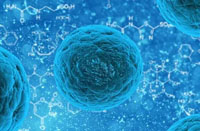Prof. Xu States on the Repetition of Chinese Intestinal Tissue Organ Cloing Study by USA
2010年-12月-24日
来源:MEBO
By Chinanews Dec. 22nd: Recently, American journal “Nature” published ascientific study report of in vitro clone of intestinal organ tissue with pluripotent stem cells by scientists from American CCH Children’s hospital. All media world wide reported this news and regarded as the first success of stem cells clone tissues in the human history. Regarding to the significance of the scientific report, the jounalist interviewed Prof. Xu Rongxiang, the founder of Human Body Regenerative Restoration Science in China.
Journalist: what remembered is that in November, 2001, you released the achievement of gastrointestinal tissues clone. Nowadays America announces the research report of gastrointestinal tissues clone. What is the difference yours and American? What is their core technique?
Xu: The research report of intestinal villi clone in American CCH Children’s Hospital pubished on Nature on 13th December is the continuity of embrionic stem cell research. In the past, the research of embrionic stem cells was just on the level of cultivating the embrionic stem cells into other cells. This research focused on the cultivation of embryonic multi-functional stem cells into tissues in vitro and it is the improvement of technique. However, the essense of this research is the natural growth of embryonic endoderm cells and it is the same as the embryonic growth in the uterus and it is as the embryonic growth in vitro. And the cell activity nauture haven’t changed and that is resaon we call it the improvement of technique. However, this research resut shows the same achievement of gastrointestinal tissue clone which we released 9 years ago. And we are happy about it, cause we have benn waiting for it for 9 year and now we can see the first successful repeat of our research.
Journalist:what is the difference between them?
Xu: the first difference: they used the embryionic stem cells and the embryonic stem cells themselves have the nature of directed differenciation into tissue organs and it can not be regarded as the new achievement of tissue organs clone and it is just the improvement of technique in vitro. The method what we took is to induce the somatc intestinal cells into multi-funciton stem cells and clone the intestinal tissuee organs. The two researches have obvious differece, the former one relies on the cells cultivation and the latter one is transformation of life. In the scientific laws of of life science, somatic cells do not have the function of stem cells. What we achieved is to induce the somatic cells into stem cells to realize the in situ clone and regneration of intestinal tissue orgas in vitro and realize the transformaton of human cells life.
The second diference: the purpose of their research is cultivating the embryonics in vitro and transplant the tissues into the body in order to kill the desease. (In the past it was just the assumption and has never been realized.
The highest level of assumption about tissue transplant for medical purpose(which has never been realised) iscompleted by creating required tissue or organ with in nitro clone technology. However, the noble idea was just approached by one step when the study realised tissue formation from cells. On the contrary,our study is to in situ regenerate new tissues or organs so as to repair defected ogans, replace dieseased tissues and restore prematurely aging organs. All of our studies have been applied on human clinically. For example, human duodenum ulcer can be regenerasted and repaired to normal mucosa status, and early degenerated aging intestinal villi can be regenerated to prosperous young villi in half a year.
Journalist: Do you think similar studies like Americans did can achieve the same clinical reslut? How long do you think it will take If yes?
Xu: The study will be applied in clinic one day, but the value seems not so much as expected, since what we have done on regeneration in situ makes it inferior and unnecessary in clinic. The study was only a trial of in vitro tissue cultivation of mice embryonic cells. It will take at least 10 years to finish transtion from animal tests to human studies because of the high risk of canceration of embryonic stem cells by artificial regulation.
In 2001, Prof. Xu released the seccess on gastrointestinal tissue organ clone, and 55 tissue organs clone in 2002. Biology center of the ministry of Science and Technology of P.R.C. organized a national hearing on the results attended by 15 academicians and renowned professors in the same field. In 2004, the world third largest medical press house KARGE published “Burns Regenerative Medicine and Therapy” by prof. Xu, and in 2009, Xu edited his achievements on human tissue and organ cloning into a monograph named as “Human Body Regenerative Restoration Science” and published it in China. Xu has been granted with 21 patents on tissue and organ cloning technology by many developed countries like USA.









